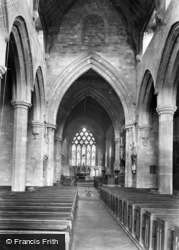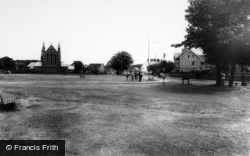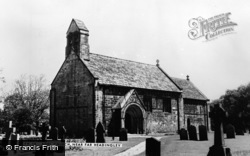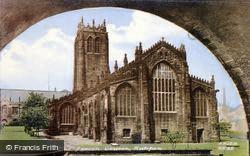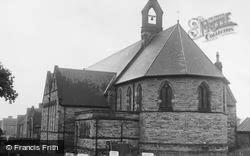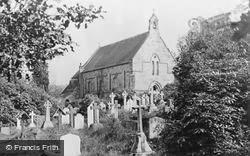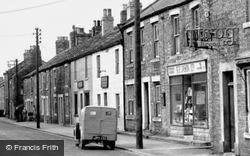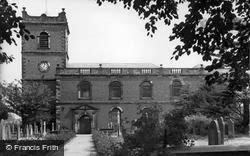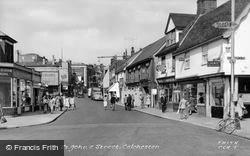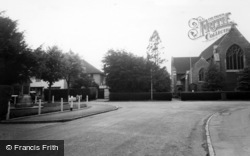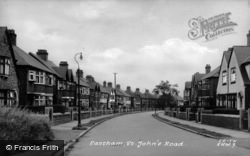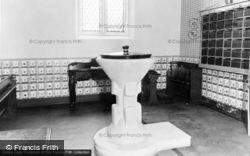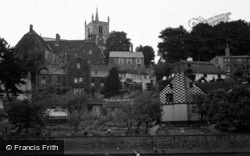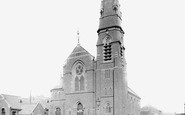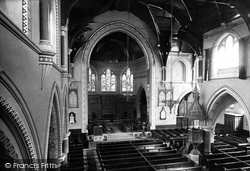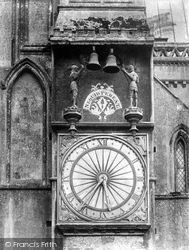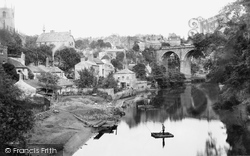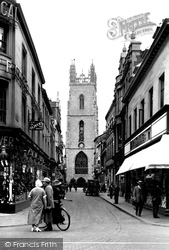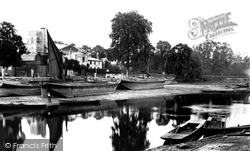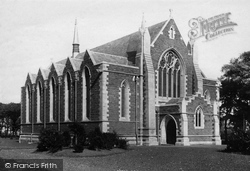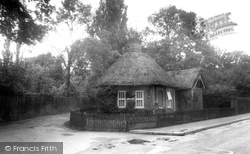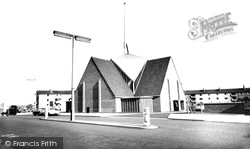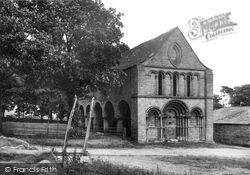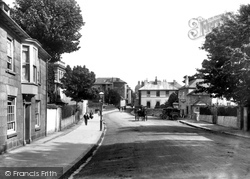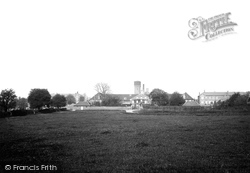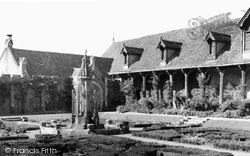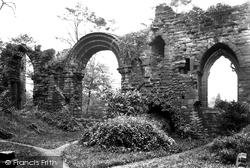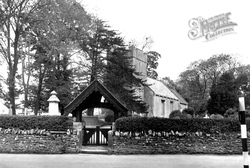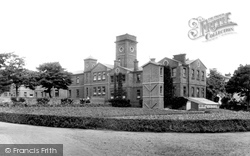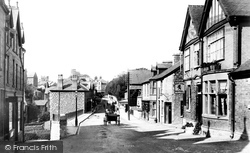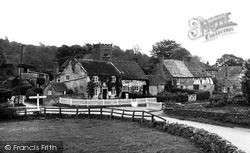Places
28 places found.
Those places high-lighted have photos. All locations may have maps, books and memories.
- St John's Chapel, Durham
- Tipton St John, Devon
- Aldbrough St John, Yorkshire
- St John's Town of Dalry, Dumfries and Galloway
- Barford St John, Oxfordshire
- St John's, Isle of Man
- Berwick St John, Wiltshire
- St Johns, Surrey
- St John, Cornwall
- St Johns, Warwickshire
- St John's, Sussex
- St John's, Yorkshire (near Garforth)
- St John's, Hereford & Worcester
- St John's, Kent (near Sevenoaks)
- St John's, Kent (near Royal Tunbridge Wells)
- St John's Park, Isle of Wight
- St Johns, Greater London
- Stanton St John, Oxfordshire
- Cranford St John, Northamptonshire
- St John's Chapel, Devon
- Terrington St John, Norfolk
- St John's Highway, Norfolk
- St John's Wood, Middlesex
- Peasedown St John, Avon
- Sherborne St John, Hampshire
- Holbeach St Johns, Lincolnshire
- St John's Fen End, Norfolk
- New Ho, Durham (near St John's Chapel)
Photos
1,633 photos found. Showing results 281 to 300.
Maps
122 maps found.
Books
Sorry, no books were found that related to your search.
Memories
921 memories found. Showing results 141 to 150.
Family History
After I foumd out that my family lived at 3 Canning Place in 1838 and attended the Holland Street Catholic Chapel, I discovered the RC baptisms of John Rogers Herbert RA artist and my g.g.g.aunt Kezia Herbert nee Dedman's ...Read more
A memory of Kensington by
Cullercoats Personal Links
My Nana Simpson (nee Brunton) was a fisherwoman who used to sell fish on the front from a creel on her back years before I was born. My Grandad contracted Polio in his 50's and Nana had to work hard long hours to bring ...Read more
A memory of Cullercoats in 1949 by
Sedgefield Crescent
I lived at 15 Sedgefield Crescent leaving in 1960 to moved to Slough; dad was at Fords and he moved to Langley, Bucks. Dad was Gerry and mum was Lillian. My sister, Wendy, was born in 1953. I went to Dycourts and then to ...Read more
A memory of Harold Hill in 1960 by
Old Family Connections
My great great grandfather John Cranstoun owned 15 Upper Broad Street from about 1850 to his death in 1890 and he is buried in St. Lawrence Church.
A memory of Ludlow in 1860 by
Growing Up In Gildersome
I was born in 1952 and lived in Gildersome until I was 19 years old. My name until then was Lorraine Thompson. I have many happy memories of living in the village. Until I was 4 years old I lived in a terrace called Green ...Read more
A memory of Gildersome in 1952 by
1905
My great grandmother lived in the Staincliffe Cottages in 1905. Her name was Margaret Brown, she had 3 children that I know of. Tom, who played for the Poolies, John, who was wounded in the 1st World War and succumbed to his injuries, and ...Read more
A memory of Seaton Carew by
My Family
Hi, just wondering if anyone remembers my dad Freddy Pye? he was born in Albert Street in 1946. my grandparents John and Doreen and my great grandparents Laura and Syl Pye also lived in Albert St. Dad has great memories of his childhood in ...Read more
A memory of Caerau by
Lady Margaret Road
We moved to 108 Lady Margaret Road in 1969. I went to St. Anselms RC school in the Green and then later Southall Grammar (Villiers); my brothers William and Martin went to St. Marks (Hounslow) and Ealing Green then to Dormers. Mum ...Read more
A memory of Heston in 1970 by
St Johns United Reformed Church
I was married at this church on 25th March 1978. My grandmother, Evelyn Sanderson also played the organ here, and at its sister church St Georges further up Park Rd. My grandfather's funeral service was also held ...Read more
A memory of Hartlepool in 1978 by
Captions
529 captions found. Showing results 337 to 360.
The parish church of St John was described as 'one of the architectural ornaments of the town', and the interior came in for much praise.
The inscription 'Nequid pereat' is a quotation from St John's Gospel, and means 'Let nothing perish (or be lost)', referring to the church fabric and the passage of time.
Augustus John, the painter, lived at Fryern Court, north of the village, from 1927 to 1961.
The church on the left is St John's, the tower of which is topped off with a small spirelet and dates from the 13th and 14th centuries.
This busy conduit linking St John's and High Street affords a perfect view of the tower.
The church of St John Baptist was rebuilt in 1877; it has a strange-looking font dated 1662. Goff's Farm is a good example of a 17th- century Wealden farmhouse. The Half Moon is a 16th-century inn.
Barnsley was founded by the monks of St John's Priory, Pontefract, after they had been granted the manor and rights to hold weekly markets and annual fairs.
This and photograph No 23535 are taken from Eel Pie Island, apparently named after the famous pies sold at the Island Tavern.
Conceived in a typically robust style by John Coates Carter, the Victoria Road church is seen here in the first decade of its existence.
It dates from the 1840s, when Sir Henry Bunbury created the park around the Hall. The gate was to the left, and survives today at the entrance to St John's.
The Church of the Epiphany and St John in Elizabeth Street stands 105ft high; its design is superb, with a star-shaped roof and an aluminium-coated steel- framed spire surmounted with a combined
St Margaret's church and the village lie in the Lune Valley, 9 miles from Lancaster.
This scene perfectly captures the rural setting of the remains of the 12th-century Benedictine Priory. The unusual oval window in the gable is similar to one at the Hospital of St John at Huntingdon.
We are looking east towards the town centre; the Market House dome is just visible at the end of the street.
It was taken over to become the County Asylum in 1829, which was enlarged over the years and closed in April 1993, when it was called St Audrey's Hospital.
King John of France was imprisoned here after the battle of Poitiers in 1356. In 1361 the Black Prince married Joan, the Fair Maid of Kent, and they honeymooned in Berkhamsted.
Joining the two courts of St John's College on either side of the River Cam is the Bridge of Sighs. It borrows the idea of the covered bridge from the one of the same name in Venice.
It is now all offices, and the Roman Catholic chapel has been deconsecrated. The biggest tenant is now the St John's Ambulance. There are fine views from the building over the Trent and Witham valley.
The present church of St John's occupies the nave of the former priory; the choir and chancel were destroyed in 1470 when the central tower collapsed.
A church stood on the site of the present St John teh Baptis;s church over 900 years ago.
The County Lunatic Asylum was built at Stone, three miles west of Aylesbury, in the early 1850s by the architects Thomas Wyatt and David Brandon.
Prior to the development of the coastal resort at Colwyn Bay in Victorian times, the old village, lying to the east and just inland from the coast, was known merely as Colwyn.
Further north along Gateford Road, near the Gladstone Street turn, the spire of St John the Evangelist's can be seen on the right behind the tall three-storey terrace of 1870s shops.
The higher part of Kilburn village, including the parish church of St Mary (which we can see in the background, centre) clusters around its large village green.
Places (28)
Photos (1633)
Memories (921)
Books (0)
Maps (122)




